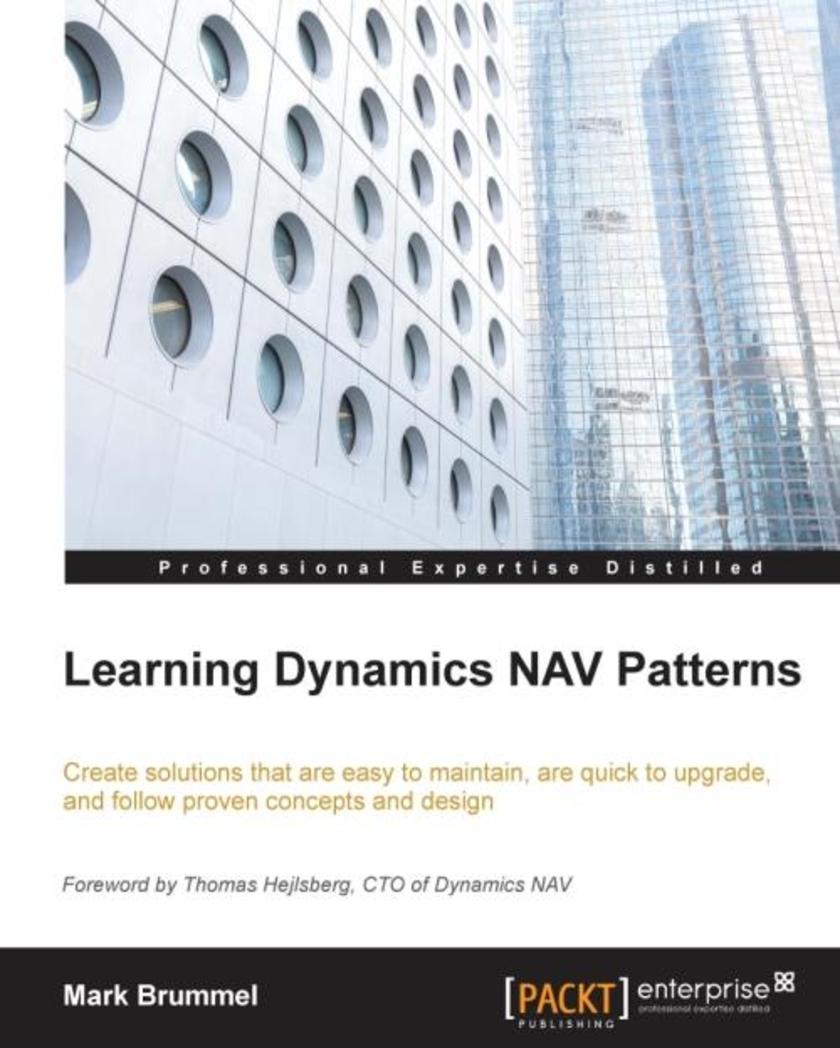
Learning Dynamics NAV Patterns
¥63.21
Create solutions that are easy to maintain, quick to upgrade, and follow proven concepts and designs About This Book Design software that is maintainable outside the ecosystem of their creators Ensure quality by following patterns that have been proved to work Over two dozen practical Architectural and Design patterns Who This Book Is For Learning Dynamics NAV Patterns is intended for developers, architects, (technical) consultants, and application managers. You may have very little or no knowledge about NAV patterns, but you should be acquainted with programming. What You Will Learn Apply object-oriented practices to C/AL programming Structure your application to avoid merge conflicts Refactor legacy code and avoid anti-patterns Design decision trees to decide when to use which patterns Clone codes and their application in Dynamics NAV Make your application extensible by creating predefined hooks and facades In Detail Microsoft Dynamics NAV is a complete ERP system, which also contains a robust set of development tools to support customization and enhancement. These include an object designer for each of the seven application object types, a business application oriented programming language with .NET interface capability, a compiler, a debugger, and programming testing language support. Learning Dynamics NAV Patterns will guide you through the NAV way of solving problems. This book will first introduce you to patterns and the software architecture of the NAV and then help you to build an example application. Then, it walks you through the details of architectural patterns, design patterns, and implementation patterns. This book will also talk about anti-patterns and handling legacy code. Finally, it teaches you to build solutions using patterns. Proven patterns and best practices will help you create better solutions that are easy to maintain in larger teams across several locations. It will guide you through combining abstract patterns using easy-to-understand examples and will help you decide which patterns to use in which scenarios. Style and approach This book explains the concepts of patterns, code structuring, and object-oriented concepts in a way that is easy to understand for Dynamics NAV specialists through practical examples.
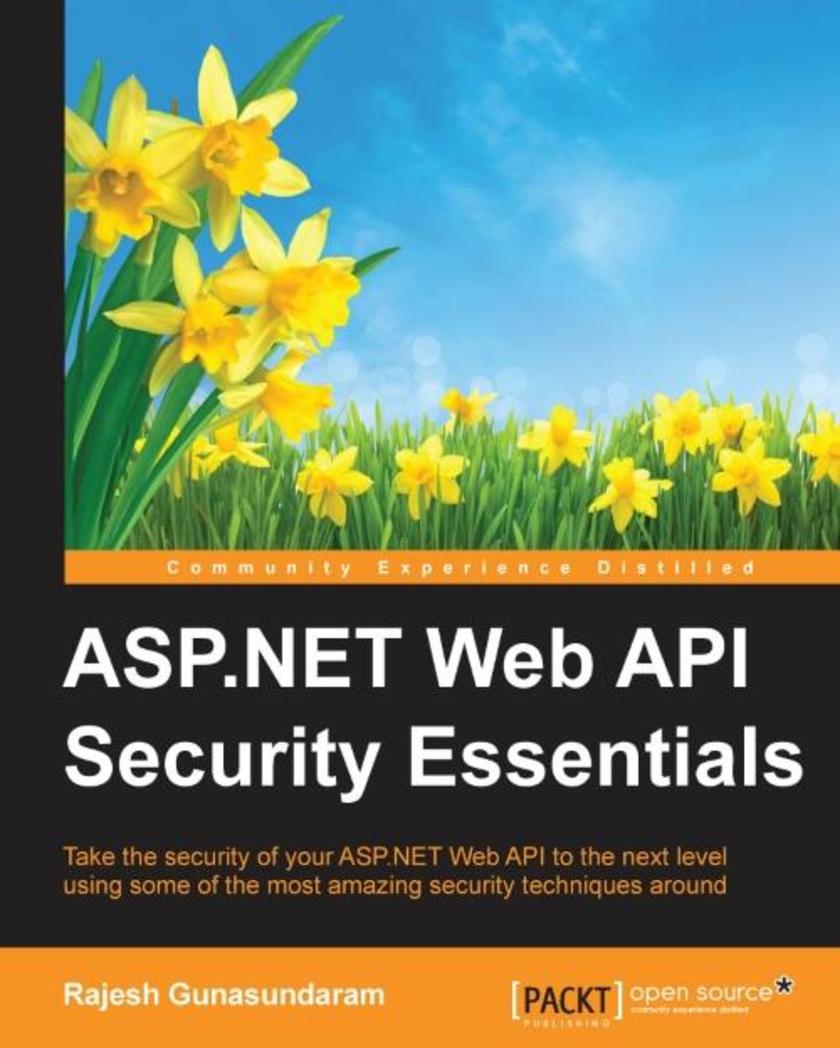
ASP.NET Web API Security Essentials
¥63.21
Take the security of your ASP.NET Web API to the next level using some of the most amazing security techniques around About This Book This book has been completely updated for ASP.NET Web API 2.0 including the new features of ASP.NET Web API such as Cross-Origin Resource Sharing (CORS) and OWIN self-hosting Learn various techniques to secure ASP.NET Web API, including basic authentication using authentication filters, forms, Windows Authentication, external authentication services, and integrating ASP.NET’s Identity system An easy-to-follow guide to enable SSL, prevent Cross-Site Request Forgery (CSRF) attacks, and enable CORS in ASP.NET Web API Who This Book Is For This book is intended for anyone who has previous knowledge of developing ASP.NET Web API applications. Good working knowledge and experience with C# and.NET Framework are prerequisites for this book. What You Will Learn Secure your web API by enabling Secured Socket Layer (SSL) Manage your application’s user accounts by integrating ASP.NET’s Identity system Ensure the security of your web API by implementing basic authentication Implement forms and Windows authentication to secure your web API Use external authentication such as Facebook and Twitter to authenticate a request to a web API Protect your web API from CSRF attacks Enable CORS in your web API to explicitly allow some cross-origin requests while rejecting others Fortify your web API using OAuth2 In Detail This book incorporates the new features of ASP.NET Web API 2 that will help you to secure an ASP.NET Web API and make a well-informed decision when choosing the right security mechanism for your security requirements. We start by showing you how to set up a browser client to utilize ASP.NET Web API services. We then cover ASP.NET Web API’s security architecture, authentication, and authorization to help you secure a web API from unauthorized users. Next, you will learn how to use SSL with ASP.NET Web API, including using SSL client certificates, and integrate the ASP.NET Identity system with ASP.NET Web API. We’ll show you how to secure a web API using OAuth2 to authenticate against a membership database using OWIN middleware. You will be able to use local logins to send authenticated requests using OAuth2. We also explain how to secure a web API using forms authentication and how users can log in with their Windows credentials using integrated Windows authentication. You will come to understand the need for external authentication services to enable OAuth/OpenID and social media authentication. We’ll then help you implement anti-Cross-Site Request Forgery (CSRF) measures in ASP.NET Web API. Finally, you will discover how to enable Cross-Origin Resource Sharing (CORS) in your web API application. Style and approach Each chapter is dedicated to a specific security technique, in a task-based and easy-to-follow way. Most of the chapters are accompanied with source code that demonstrates the step-by-step guidelines of implementing the technique, and includes an explanation of how each technique works.
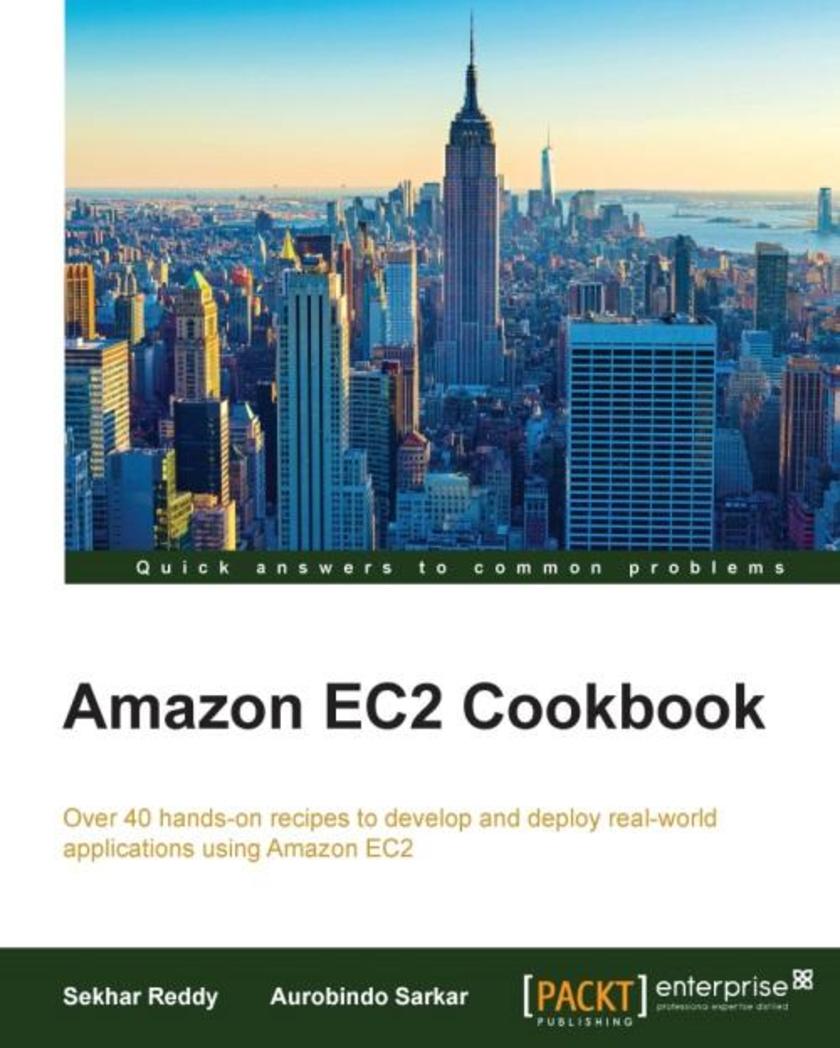
Amazon EC2 Cookbook
¥63.21
Over 40 hands-on recipes to develop and deploy real-world applications using Amazon EC2 About This Book Design and build applications using Amazon EC2 and a range of supporting AWS tools Find highly effective solutions to your AWS Cloud-based application development, deployment, and infrastructural issues A comprehensive set of recipes to implement your product’s functional and non-functional requirements Who This Book Is For This book is targeted at Cloud-based developers who have prior exposure to AWS concepts and features. Some experience in building small applications and creating some proof-of-concept applications is required. What You Will Learn Select and configure the right EC2 instances Create, configure, and secure a Virtual Private Cloud Create an AWS CloudFormation template Use AWS Identity and Access Management to secure access to EC2 instances Configure auto-scaling groups using CloudWatch Choose and use the right data service such as SimpleDB and DynamoDB for your cloud applications Access key AWS services using client tools and AWS SDKs Deploy AWS applications using Docker containers In Detail Amazon Elastic Compute Cloud (Amazon EC2) is a web service that provides flexible and resizable compute capacity in the cloud. The main purpose of Amazon EC2 is to make web-scale cloud computing easier for the developers. It offers developers and companies the raw building blocks like load balancers, object stores and virtual machines running on general hardware (that is, Amazon runs a multitude of hardware components but presents them as a generic utility to its users) with accessible APIs in order to create scalable software products This book covers designing, developing, and deploying scalable, highly available, and secure applications on the AWS platform. By following the steps in the recipes, you will be able to effectively and systematically resolve issues related to development, deployment, and infrastructure for enterprise-grade cloud applications or products. This book starts with helping you choose and configure the right EC2 instances to meet your application-specific requirements. The book then moves on to creating a CloudFormation template and will teach you how to work with stacks. You will then be introduced to using IAM services to configure users, groups, roles, and multi-factor authentication. You will also learn how to connect AD to AWS IAM. Next, you will be using AWS data services and accessing other AWS services including Route 53, Amazon S3, and AWS SES (Amazon Simple Email Service). Finally, you will be deploying AWS applications using Docker containers. Style and approach This book contains a rich set of recipes that cover not only the full spectrum of real-world cloud application development using Amazon EC2, but also the services and security of the applications. The book contains easy-to-follow recipes with step-by-step instructions to leverage EC2 within your applications.
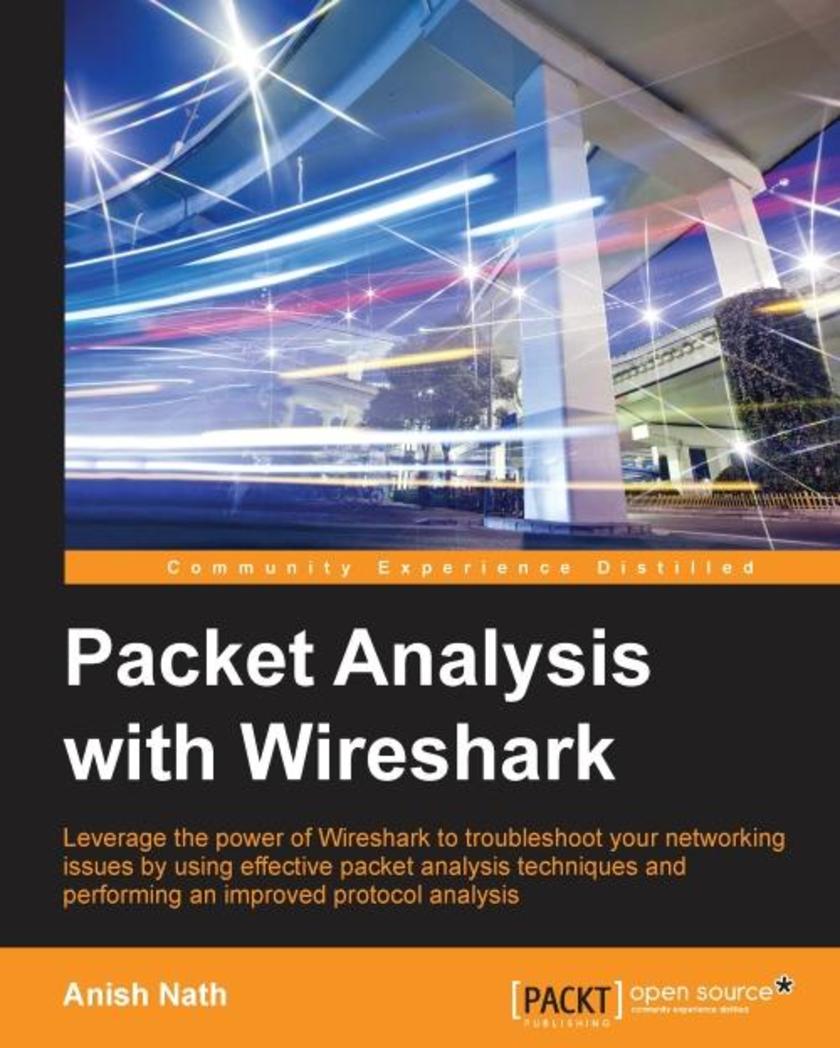
Packet Analysis with Wireshark
¥63.21
Leverage the power of Wireshark to troubleshoot your networking issues by using effective packet analysis techniques and performing improved protocol analysis About This Book Gain hands-on experience of troubleshooting errors in TCP/IP and SSL protocols through practical use cases Identify and overcome security flaws in your network to get a deeper insight into security analysis This is a fast-paced book that focuses on quick and effective packet captures through practical examples and exercises Who This Book Is For If you are a network or system administrator who wants to effectively capture packets, a security consultant who wants to audit packet flows, or a white hat hacker who wants to view sensitive information and remediate it, this book is for you. This book requires decoding skills and a basic understanding of networking. What You Will Learn Utilize Wireshark's advanced features to analyze packet captures Locate the vulnerabilities in an application server Get to know more about protocols such as DHCPv6, DHCP, DNS, SNMP, and HTTP with Wireshark Capture network packets with tcpdump and snoop with examples Find out about security aspects such as OS-level ARP scanning Set up 802.11 WLAN captures and discover more about the WAN protocol Enhance your troubleshooting skills by understanding practical TCP/IP handshake and state diagrams In Detail Wireshark provides a very useful way to decode an RFC and examine it. The packet captures displayed in Wireshark give you an insight into the security and flaws of different protocols, which will help you perform the security research and protocol debugging. The book starts by introducing you to various packet analyzers and helping you find out which one best suits your needs. You will learn how to use the command line and the Wireshark GUI to capture packets by employing filters. Moving on, you will acquire knowledge about TCP/IP communication and its use cases. You will then get an understanding of the SSL/TLS flow with Wireshark and tackle the associated problems with it. Next, you will perform analysis on application-related protocols. We follow this with some best practices to analyze wireless traffic. By the end of the book, you will have developed the skills needed for you to identify packets for malicious attacks, intrusions, and other malware attacks. Style and approach This is an easy-to-follow guide packed with illustrations and equipped with lab exercises to help you reproduce scenarios using a sample program and command lines.
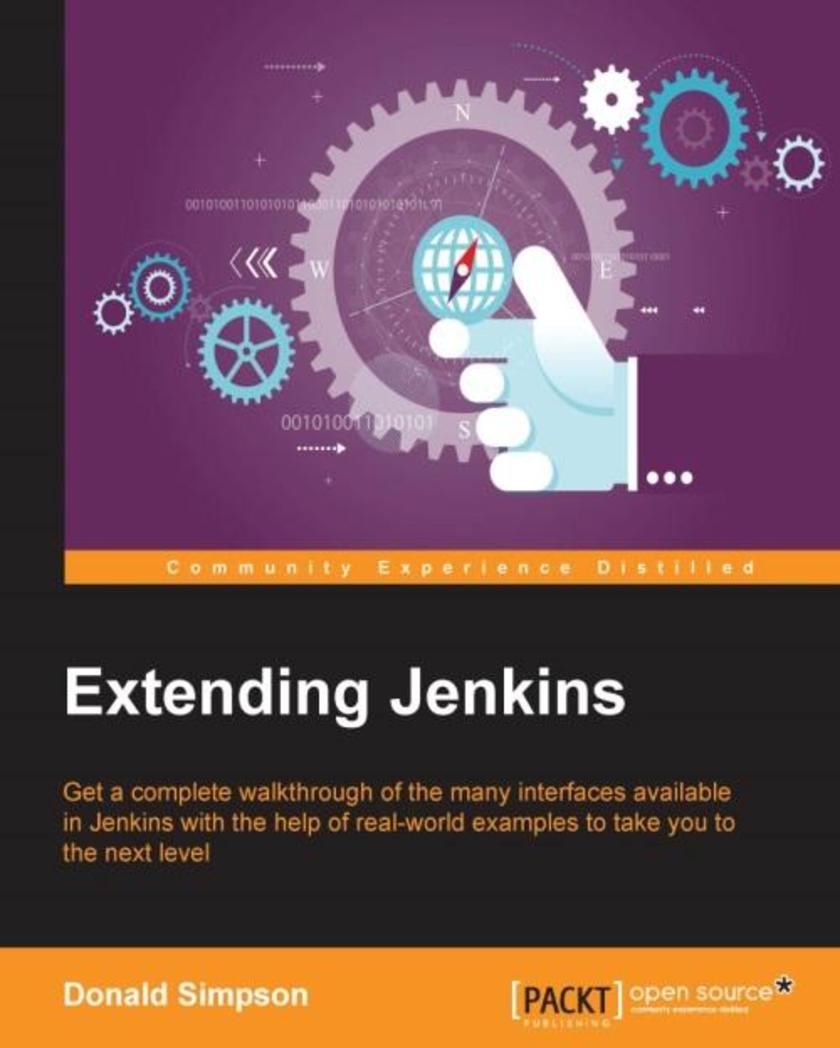
Extending Jenkins
¥63.21
Get a complete walkthrough of the many interfaces available in Jenkins with the help of real-world examples to take you to the next level with Jenkins About This Book Find out how to interact with Jenkins from within Eclipse, NetBeans, and IntelliJ IDEA Develop custom solutions that act upon Jenkins information in real time A step-by-step, practical guide to help you learn about extension points in existing plugins and how to build your own plugin Who This Book Is For This book is aimed primarily at developers and administrators who are interested in taking their interaction and usage of Jenkins to the next level. The book assumes you have a working knowledge of Jenkins and programming in general, and an interest in learning about the different approaches to customizing and extending Jenkins so it fits your requirements and your environment perfectly. What You Will Learn Retrieve and act upon Jenkins information in real time Find out how to interact with Jenkins through a variety of IDEs Develop your own Form and Input validation and customization Explore how Extension points work, and develop your own Jenkins plugin See how to use the Jenkins API and command-line interface Get to know how to remotely update your Jenkins configuration Design and develop your own Information Radiator Discover how Jenkins customization can help improve quality and reduce costs In Detail Jenkins CI is the leading open source continuous integration server. It is written in Java and has a wealth of plugins to support the building and testing of virtually any project. Jenkins supports multiple Software Configuration Management tools such as Git, Subversion, and Mercurial. This book explores and explains the many extension points and customizations that Jenkins offers its users, and teaches you how to develop your own Jenkins extensions and plugins. First, you will learn how to adapt Jenkins and leverage its abilities to empower DevOps, Continuous Integration, Continuous Deployment, and Agile projects. Next, you will find out how to reduce the cost of modern software development, increase the quality of deliveries, and thereby reduce the time to market. We will also teach you how to create your own custom plugins using Extension points. Finally, we will show you how to combine everything you learned over the course of the book into one real-world scenario. Style and approach Extending Jenkins explores and explains advanced Jenkins functionality from a practical point of view, teaching you real-world skills that will help you get more from this powerful software. Each key topic is explained clearly with a practical example, and in sufficient detail so you understand the concepts and can then develop your own solutions using your preferred software and languages.
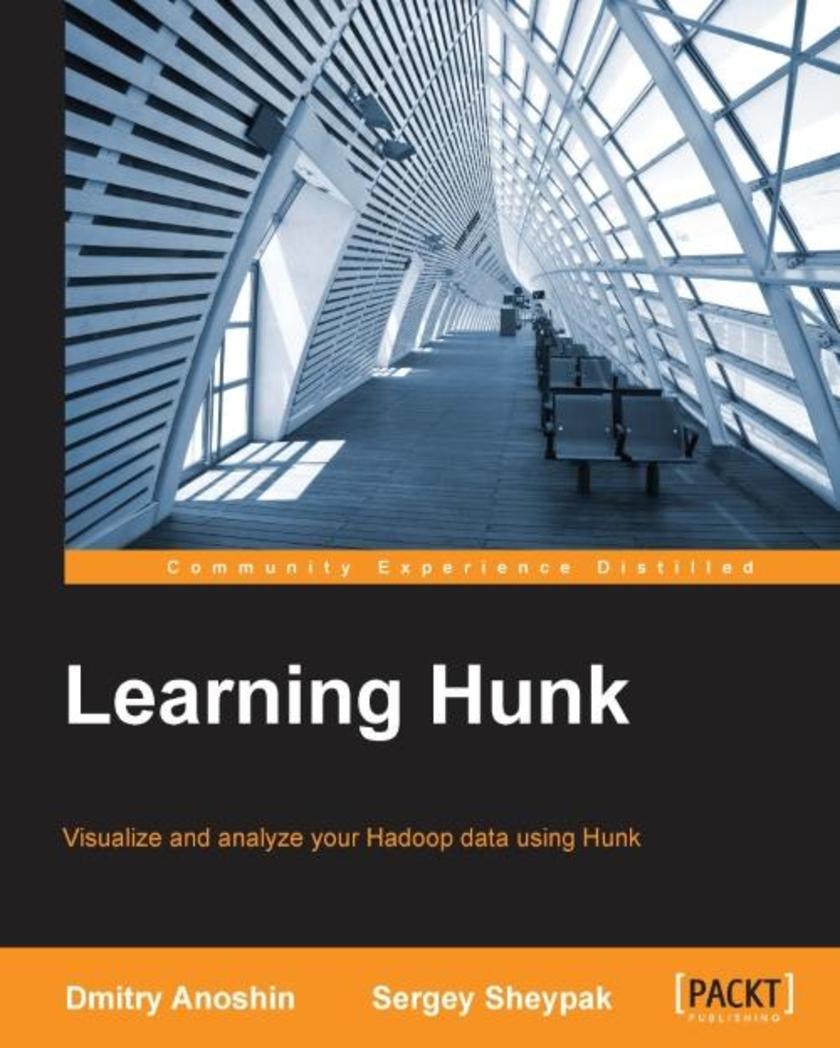
Learning Hunk
¥63.21
Visualize and analyze your Hadoop data using Hunk About This Book Explore your data in Hadoop and NoSQL data stores Create and optimize your reporting experience with advanced data visualizations and data analytics A comprehensive developer's guide that helps you create outstanding analytical solutions efficiently Who This Book Is For If you are Hadoop developers who want to build efficient real-time Operation Intelligence Solutions based on Hadoop deployments or various NoSQL data stores using Hunk, this book is for you. Some familiarity with Splunk is assumed. What You Will Learn Deploy and configure Hunk on top of Cloudera Hadoop Create and configure Virtual Indexes for datasets Make your data presentable using the wide variety of data visualization components and knowledge objects Design a data model using Hunk best practices Add more flexibility to your analytics solution via extended SDK and custom visualizations Discover data using MongoDB as a data source Integrate Hunk with AWS Elastic MapReduce to improve scalability In Detail Hunk is the big data analytics platform that lets you rapidly explore, analyse, and visualize data in Hadoop and NoSQL data stores. It provides a single, fluid user experience, designed to show you insights from your big data without the need for specialized skills, fixed schemas, or months of development. Hunk goes beyond typical data analysis methods and gives you the power to rapidly detect patterns and find anomalies across petabytes of raw data. This book focuses on exploring, analysing, and visualizing big data in Hadoop and NoSQL data stores with this powerful full-featured big data analytics platform. You will begin by learning the Hunk architecture and Hunk Virtual Index before moving on to how to easily analyze and visualize data using Splunk Search Language (SPL). Next you will meet Hunk Apps which can easy integrate with NoSQL data stores such as MongoDB or Sqqrl. You will also discover Hunk knowledge objects, build a semantic layer on top of Hadoop, and explore data using the friendly user-interface of Hunk Pivot. You will connect MongoDB and explore data in the data store. Finally, you will go through report acceleration techniques and analyze data in the AWS Cloud. Style and approach A step-by-step guide starting right from the basics and deep diving into the more advanced and technical aspects of Hunk.
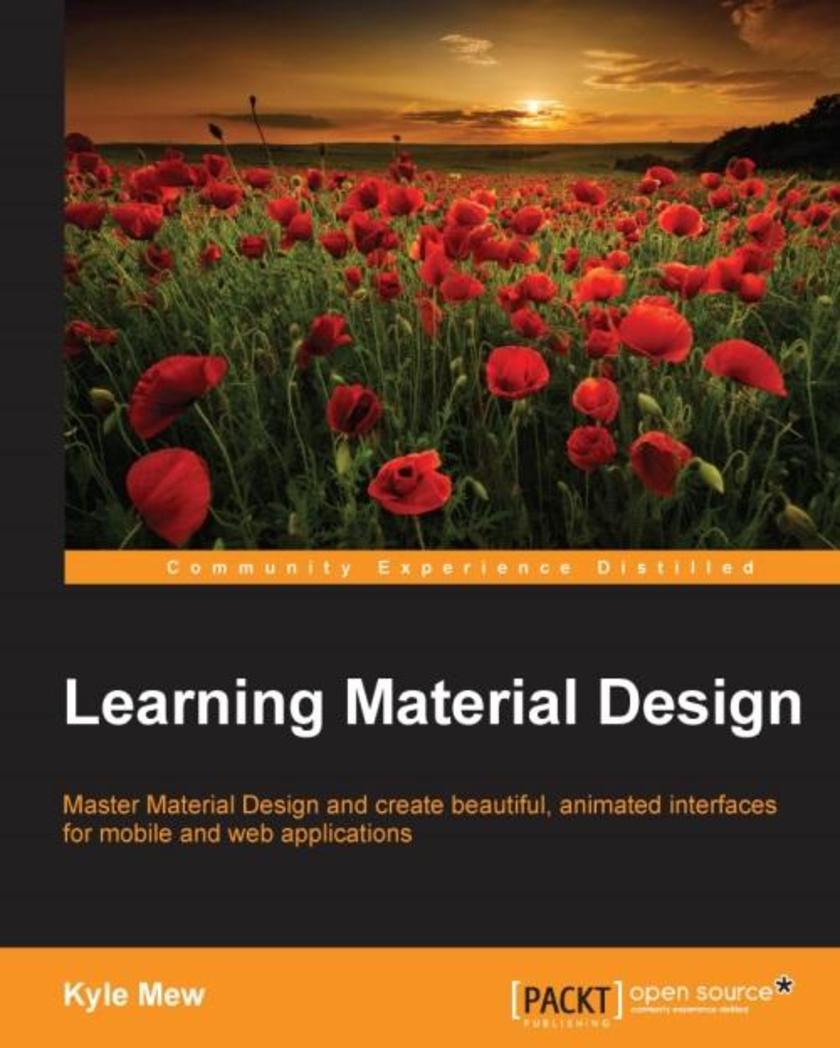
Learning Material Design
¥63.21
Master Material Design and create beautiful, animated interfaces for mobile and web applications About This Book Master the highly acclaimed Material Design paradigm and give your apps and pages the look that everyone is talking about Get a mix of key theoretical concepts combined with enough practical examples to put each theory into practice so you can create elegant material interfaces with Android Studio and Polymer Written by Kyle Mew, successful author with over a decade of mobile and web development experience, this book has both the touch of a developer as well as an experienced writer Who This Book Is For This book is ideal for web developers and designers who are interested in implementing Material Design in their mobile and web apps. No prior knowledge or experience of Material Design is required, but some familiarity with procedural languages such as Java and markup languages such as HTML will provide an advantage. What You Will Learn Implement Material Design on both mobile and web platforms that work on older handsets and browsers Design stylish layouts with the Material Theme Create and manage cards, lists, and grids Design and implement sliding drawers for seamless navigation Coordinate components to work together Animate widgets and create transitions and animation program flow Use Polymer to bring Material Design to your web pages In Detail Google's Material Design language has taken the web development and design worlds by storm. Now available on many more platforms than Android, Material Design uses color, light, and movements to not only generate beautiful interfaces, but to provide intuitive navigation for the user. Learning Material Design will teach you the fundamental theories of Material Design using code samples to put these theories into practice. Focusing primarily on Android Studio, you’ll create mobile interfaces using the most widely used and powerful material components, such as sliding drawers and floating action buttons. Each section will introduce the relevant Java classes and APIs required to implement these components. With the rules regarding structure, layout, iconography, and typography covered, we then move into animation and transition, possibly Material Design's most powerful concept, allowing complex hierarchies to be displayed simply and stylishly. With all the basic technologies and concepts mastered, the book concludes by showing you how these skills can be applied to other platforms, in particular web apps, using the powerful Polymer library. Style and approach Learning Material Design combines the theories behind material design with practical examples of how these can be implemented and further reinforcing the guidelines covering style, layout and structure.
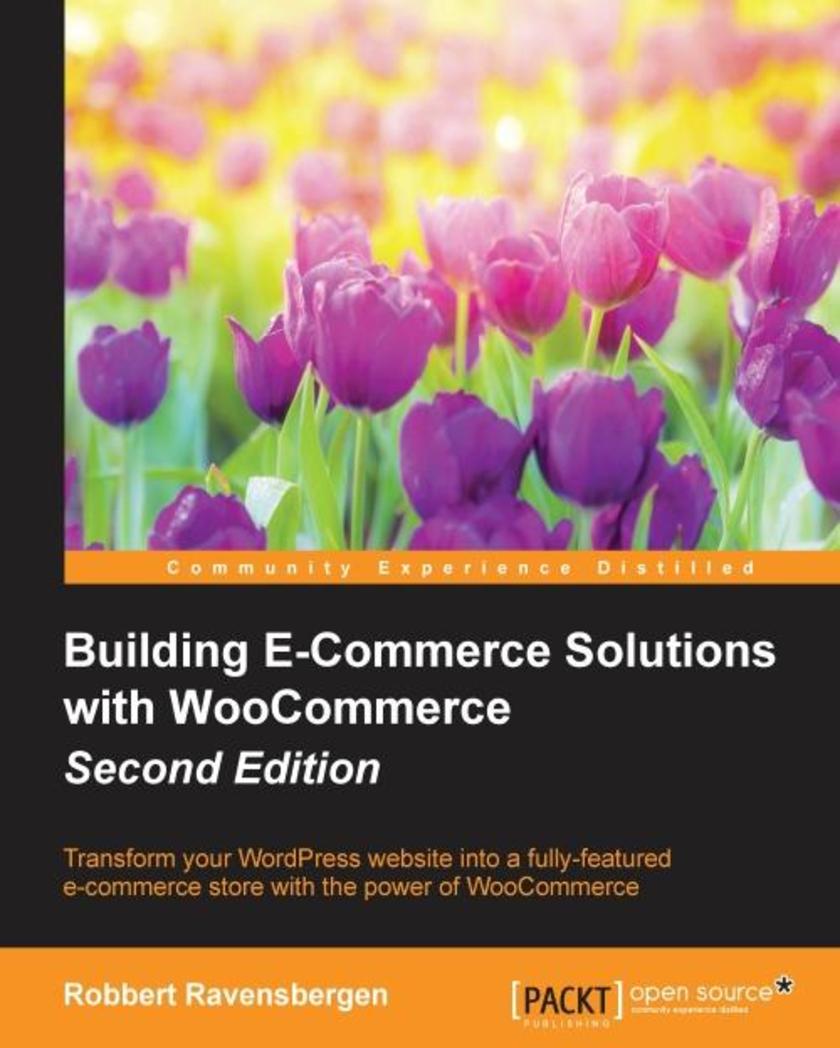
Building E-Commerce Solutions with WooCommerce - Second Edition
¥63.21
Transform your WordPress website into a fully-featured e-commerce store with the power of WooCommerce About This Book Offers do-it-yourself e-commerce solution using WordPress and WooCommerce Discover the new Onboarding wizard that makes complex processes user-friendly Manage your online store and expand its functions using plugins Who This Book Is For This book is suitable for everybody running their own WordPress website, such as small business owners and marketers. It has been written for users, not for programmers, who want to add e-commerce functionality to their existing WordPress website. The book will also appeal to Web design agencies working with WordPress and looking for ways to improve their services for clients working with WordPress. What You Will Learn Use WooCommerce settings to set up the behavior of the online store Get familiar with the downloadable and variable products Set up shipping and payment methods Use discount coupons for marketing purposes Choose the right WooCommerce theme for your online store Customize your website using the Storefront theme as a base Handle orders, payments, and emails on a daily basis with ease Work with WooCommerce reporting possibilities Expanding your online store with the functionalities offered by WooCommerce In Detail Building an online store is often considered to be a difficult, complex task. Using the combination of WordPress and the WooCommerce plugin, this is no longer the case. WooCommerce is the most popular e-commerce platform for WordPress and is being rapidly developed by WooThemes. It provides a strong e-commerce solution to set up your own online store in just a couple of hours. This easy and practical book will help you make the most of WooCommerce to be able to set up and run your online store yourself. Installing WooCommerce is an easy task, but this book will explain in detail all the possible settings. After that you'll be adding products, different payment methods, and shipping solutions to your store. You will then customize your store by adding themes to change the look and feel. Once your store is running, you'll learn how to use discount coupons, process your orders, look at reports, and even expand the functionality further with additional plugins. By the end of the book, you will learn everything you need to add a fully functional online store to you WordPress website and start running an online business. Style and approach This book is a practical, step-by-step guide that will help you manage your online store easily and efficiently, and expand its functions using the WooCommerce plug-in
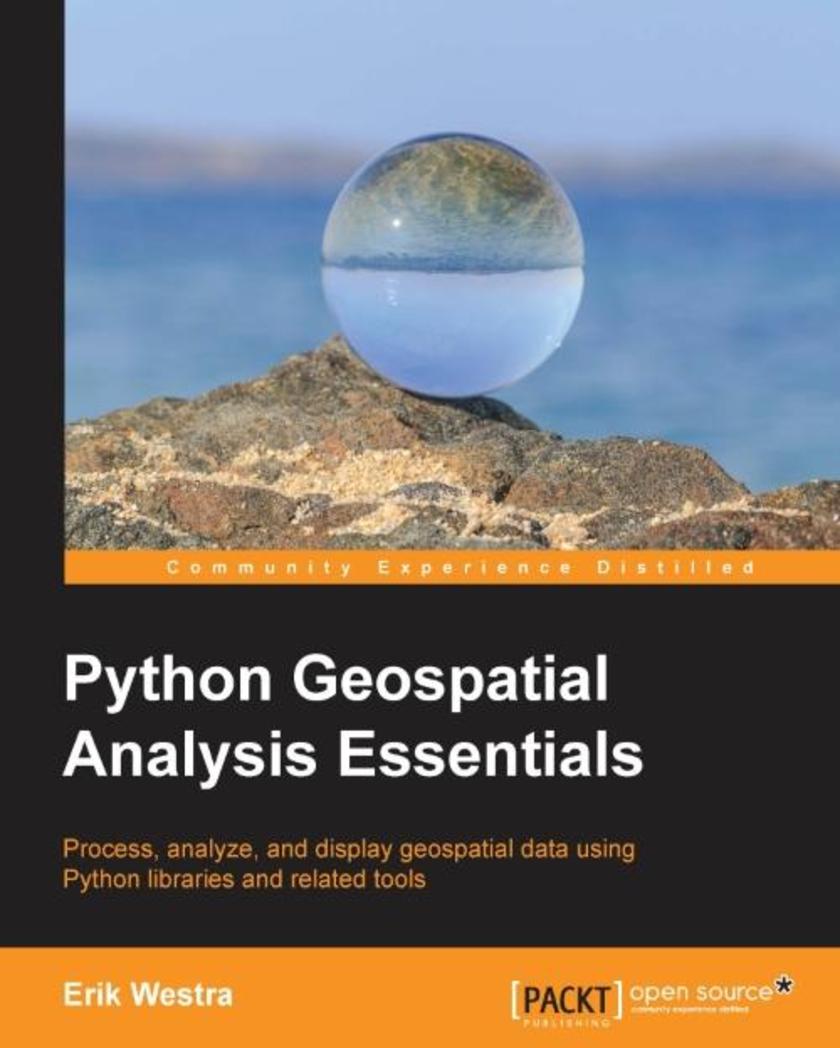
Python Geospatial Analysis Essentials
¥63.21
If you are an experienced Python developer and wish to get up-to-speed with geospatial programming, then this book is for you. While familiarity with installing third-party Python libraries would be an advantage, no prior knowledge of geospatial programming is required.
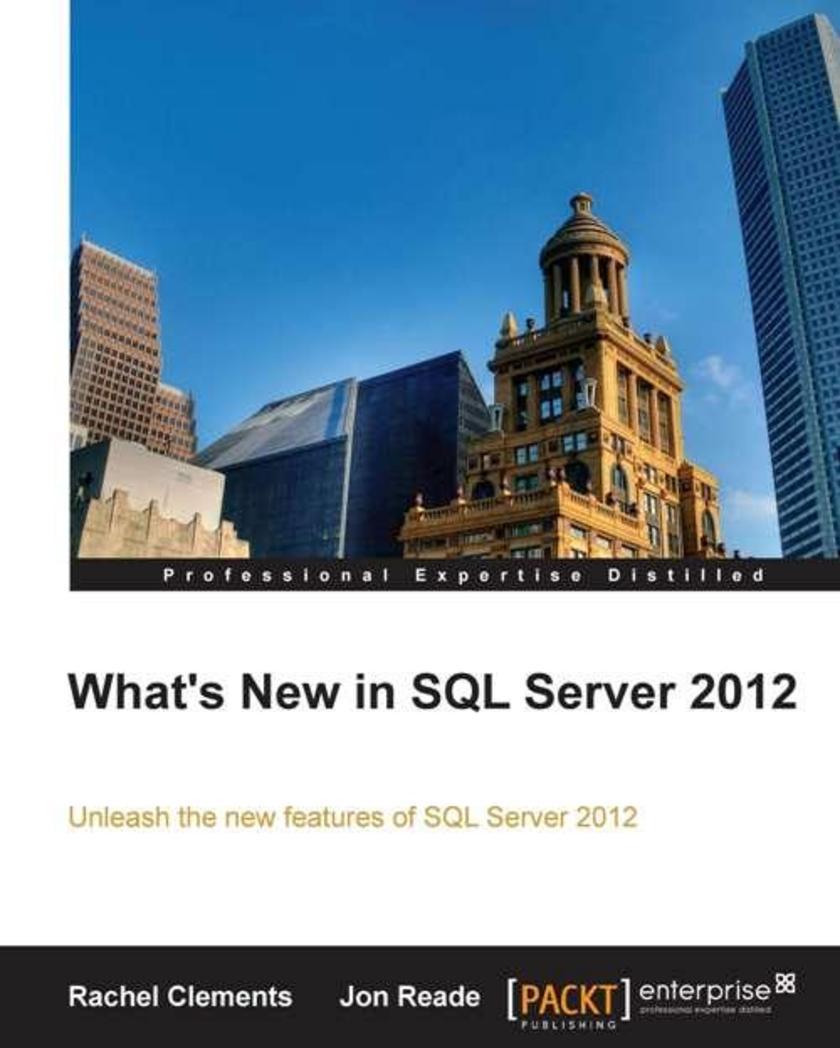
What's new in SQL Server 2012
¥63.21
This is a hands-on book to quickly get you up to speed with SQL Server 2012. It covers all the new features of the core database engine as well as the business intelligence (BI) services.The book begins by taking you step-by-step through the installation process, showing you what to install and which services and features you need. Once you have your SQL Server in place, you learn how to administer it and then explore new T-SQL functions to expand your query-writing toolkit. You will discover how the enhancements to Integration Services, Analysis Services and Reporting Services make developing BI solutions easier. It will then introduce you to SQL Server Data Tools, your new and improved development environment for creating database and BI projects.A hands-on example guides you through the steps required to run Distributed Replay, giving you the experience you need to apply this in the field. The book then takes you through a detailed example to show you how to create a Data Quality Services project and cleanse real-world data. Easy to follow code samples provide you with the queries you need to set up Availability Groups using the new AlwaysOn technology.Once you are comfortable with these new features you will be ready to migrate your data to the cloud and into SQL Azure. An exploration of Hadoop will help you understand big data and how it really is the next big thing,This concise reference is for database administrators, SQL Server Developers and BI professionals. Anyone who is familiar with SQL Server 2008 R2 and needs to make the jump to the latest version with the shortest learning curve will find this book useful.
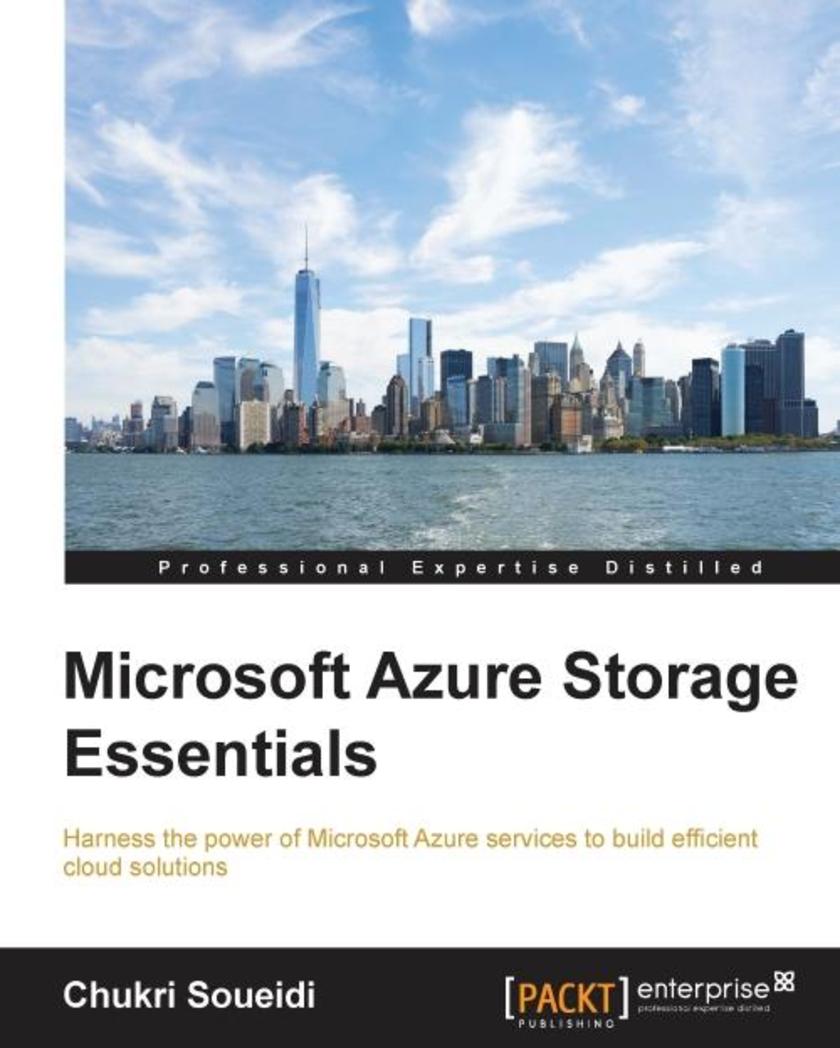
Microsoft Azure Storage Essentials
¥63.21
If you are an IT professional with a basic knowledge of Microsoft Azure and want to learn Azure Storage services, then this book is for you.
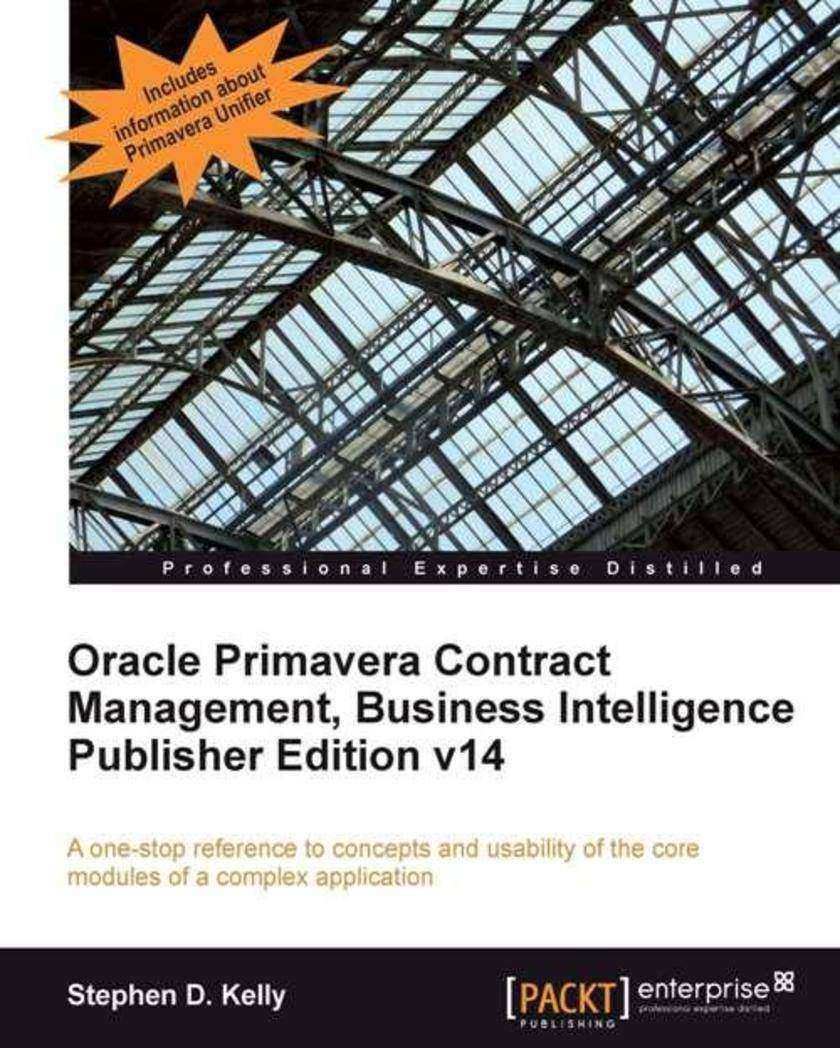
Oracle Primavera Contract Management, Business Intelligence Publisher Edition v1
¥63.21
This book is packed with real world examples that cover concepts and usability of the core modules of a complex application. If you are Project manager or consultant looking forward to using and implementing Oracle Primavera Contract Management in your organization, then this is the best guide for you. No prior knowledge of PCM required.
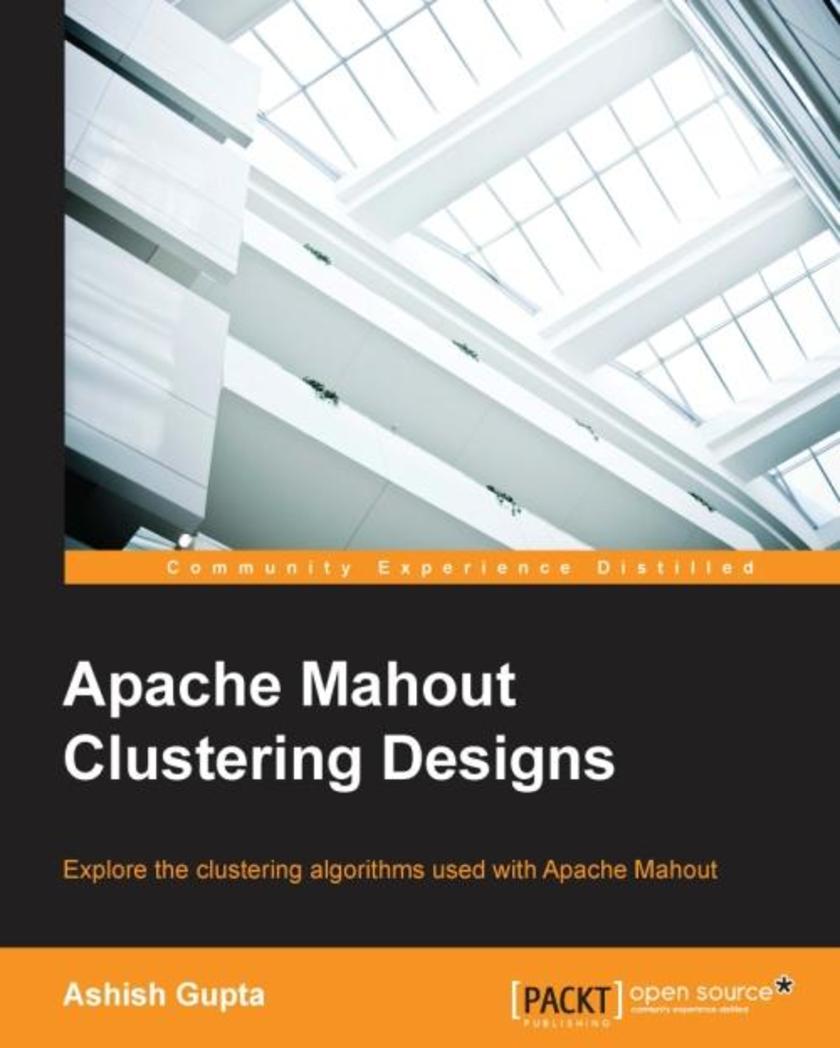
Apache Mahout Clustering Designs
¥63.21
Explore clustering algorithms used with Apache MahoutAbout This BookUse Mahout for clustering datasets and gain useful insightsExplore the different clustering algorithms used in day-to-day workA practical guide to create and evaluate your own clustering models using real world data sets Who This Book Is For This book is for developers who want to try out clustering on large datasets using Mahout. It will also be useful for those users who don’t have background in Mahout, but have knowledge of basic programming and are familiar with basics of machine learning and clustering. It will be helpful if you know about clustering techniques with some other tool.What You Will LearnExplore clustering algorithms and cluster evaluation techniquesLearn different types of clustering and distance measuring techniquesPerform clustering on your data using K-Means clusteringDiscover how canopy clustering is used as pre-process step for K-MeansUse the Fuzzy K-Means algorithm in Apache MahoutImplement Streaming K-Means clustering in MahoutLearn Spectral K-Means clustering implementation of Mahout In Detail As more and more organizations are discovering the use of big data analytics, interest in platforms that provide storage, computation, and analytic capabilities has increased. Apache Mahout caters to this need and paves the way for the implementation of complex algorithms in the field of machine learning to better analyse your data and get useful insights into it. Starting with the introduction of clustering algorithms, this book provides an insight into Apache Mahout and different algorithms it uses for clustering data. It provides a general introduction of the algorithms, such as K-Means, Fuzzy K-Means, StreamingKMeans, and how to use Mahout to cluster your data using a particular algorithm. You will study the different types of clustering and learn how to use Apache Mahout with real world data sets to implement and evaluate your clusters. This book will discuss about cluster improvement and visualization using Mahout APIs and also explore model-based clustering and topic modelling using Dirichlet process. Finally, you will learn how to build and deploy a model for production use.Style and approach This book is a hand's-on guide with examples using real-world datasets. Each chapter begins by explaining the algorithm in detail and follows up with showing how to use mahout for that algorithm using example data-sets.
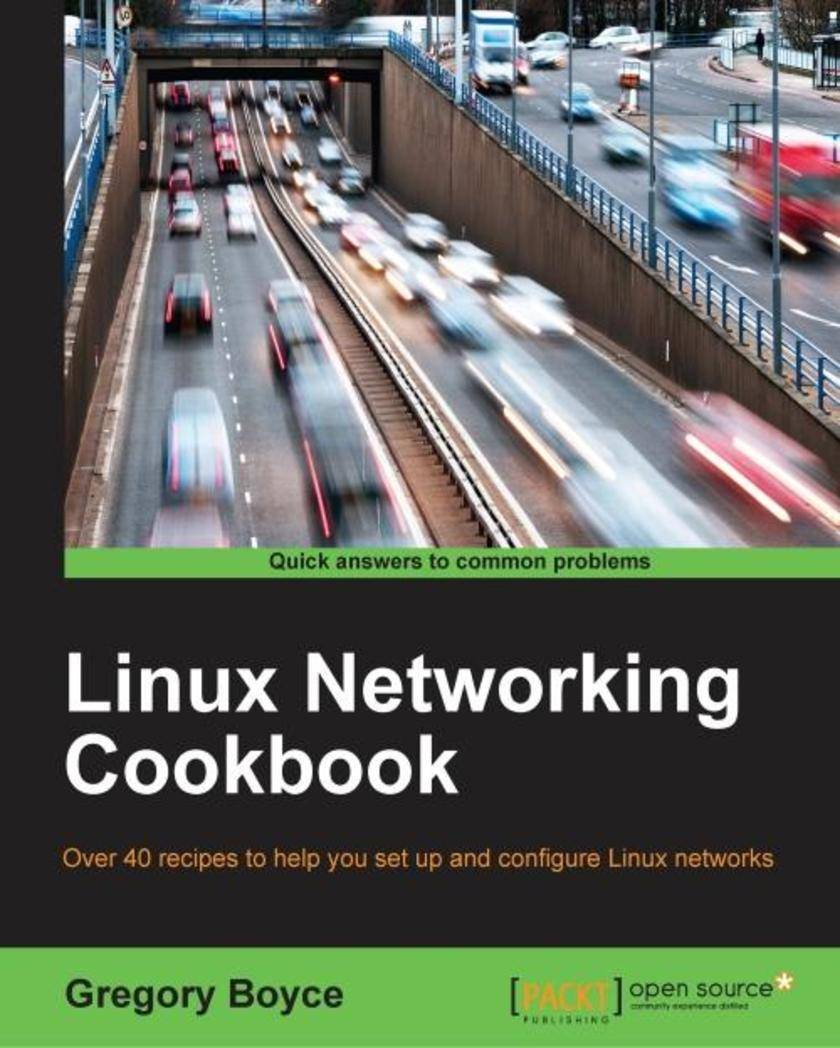
Linux Networking Cookbook
¥63.21
Over 40 recipes to help you set up and configure Linux networks About This Book Move beyond the basics of how a Linux machine works and gain a better understanding of Linux networks and their configuration Impress your peers by setting up and configuring a Linux server and its various network elements like a pro This is a hands-on solution guide to building, maintaining, and securing a network using Linux Who This Book Is For This book is targeted at Linux systems administrators who have a good basic understanding and some prior experience of how a Linux machine operates, but want to better understand how various network services function, how to set them up, and how to secure them. You should be familiar with how to set up a Linux server and how to install additional software on them. What You Will Learn Route an IPv6 netblock to your local network Modify your named instance to support setting hostnames for your IPv6 addresses Use SSH for remote console access Configure NGINX with TLS Secure XMPP with TLS Leverage iptables6 to firewall your IPv6 traffic Configure Samba as an Active Directory compatible directory service In Detail Linux can be configured as a networked workstation, a DNS server, a mail server, a firewall, a gateway router, and many other things. These are all part of administration tasks, hence network administration is one of the main tasks of Linux system administration. By knowing how to configure system network interfaces in a reliable and optimal manner, Linux administrators can deploy and configure several network services including file, web, mail, and servers while working in large enterprise environments. Starting with a simple Linux router that passes traffic between two private networks, you will see how to enable NAT on the router in order to allow Internet access from the network, and will also enable DHCP on the network to ease configuration of client systems. You will then move on to configuring your own DNS server on your local network using bind9 and tying it into your DHCP server to allow automatic configuration of local hostnames. You will then future enable your network by setting up IPv6 via tunnel providers. Moving on, we’ll configure Samba to centralize authentication for your network services; we will also configure Linux client to leverage it for authentication, and set up a RADIUS server that uses the directory server for authentication. Toward the end, you will have a network with a number of services running on it, and will implement monitoring in order to detect problems as they occur. Style and approach This book is packed with practical recipes and a task-based approach that will walk you through building, maintaining, and securing a computer network using Linux.
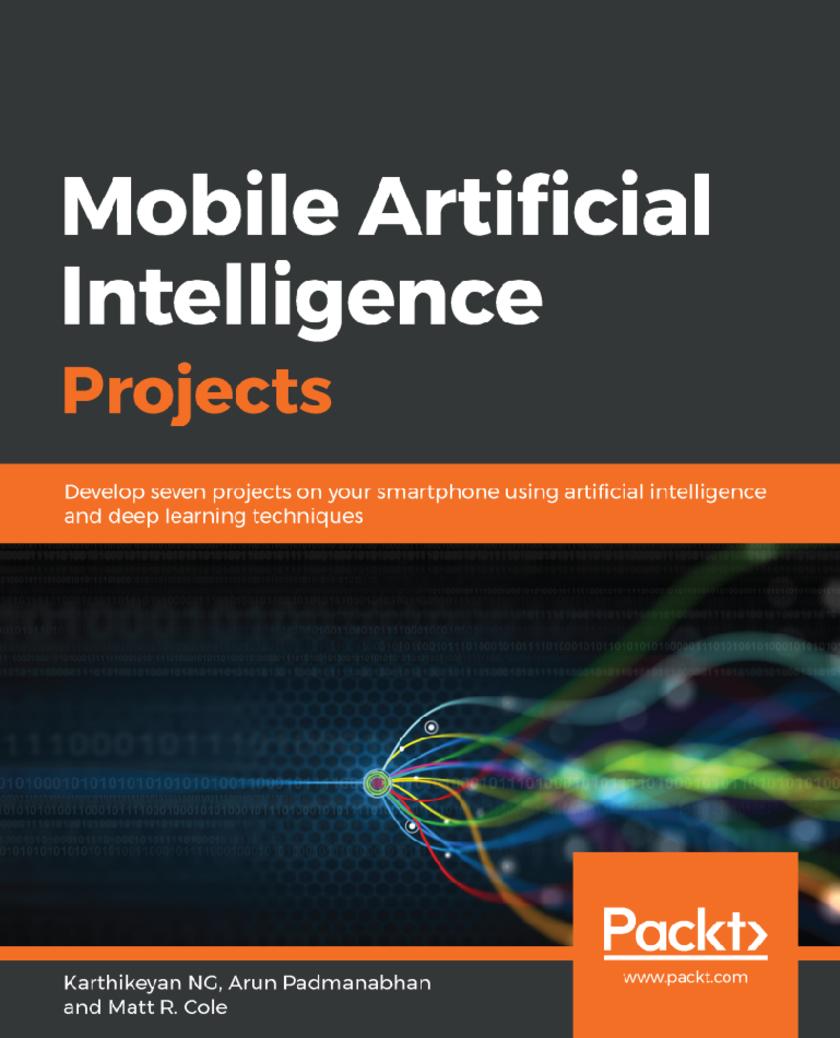
Mobile Artificial Intelligence Projects
¥63.21
Learn to build end-to-end AI apps from scratch for Android and iOS using TensorFlow Lite, CoreML, and PyTorch Key Features * Build practical, real-world AI projects on Android and iOS * Implement tasks such as recognizing handwritten digits, sentiment analysis, and more * Explore the core functions of machine learning, deep learning, and mobile vision Book Description We’re witnessing a revolution in Artificial Intelligence, thanks to breakthroughs in deep learning. Mobile Artificial Intelligence Projects empowers you to take part in this revolution by applying Artificial Intelligence (AI) techniques to design applications for natural language processing (NLP), robotics, and computer vision. This book teaches you to harness the power of AI in mobile applications along with learning the core functions of NLP, neural networks, deep learning, and mobile vision. It features a range of projects, covering tasks such as real-estate price prediction, recognizing hand-written digits, predicting car damage, and sentiment analysis. You will learn to utilize NLP and machine learning algorithms to make applications more predictive, proactive, and capable of making autonomous decisions with less human input. In the concluding chapters, you will work with popular libraries, such as TensorFlow Lite, CoreML, and PyTorch across Android and iOS platforms. By the end of this book, you will have developed exciting and more intuitive mobile applications that deliver a customized and more personalized experience to users. What you will learn * Explore the concepts and fundamentals of AI, deep learning, and neural networks * Implement use cases for machine vision and natural language processing * Build an ML model to predict car damage using TensorFlow * Deploy TensorFlow on mobile to convert speech to text * Implement GAN to recognize hand-written digits * Develop end-to-end mobile applications that use AI principles * Work with popular libraries, such as TensorFlow Lite, CoreML, and PyTorch Who this book is for Mobile Artificial Intelligence Projects is for machine learning professionals, deep learning engineers, AI engineers, and software engineers who want to integrate AI technology into mobile-based platforms and applications. Sound knowledge of machine learning and experience with any programming language is all you need to get started with this book.
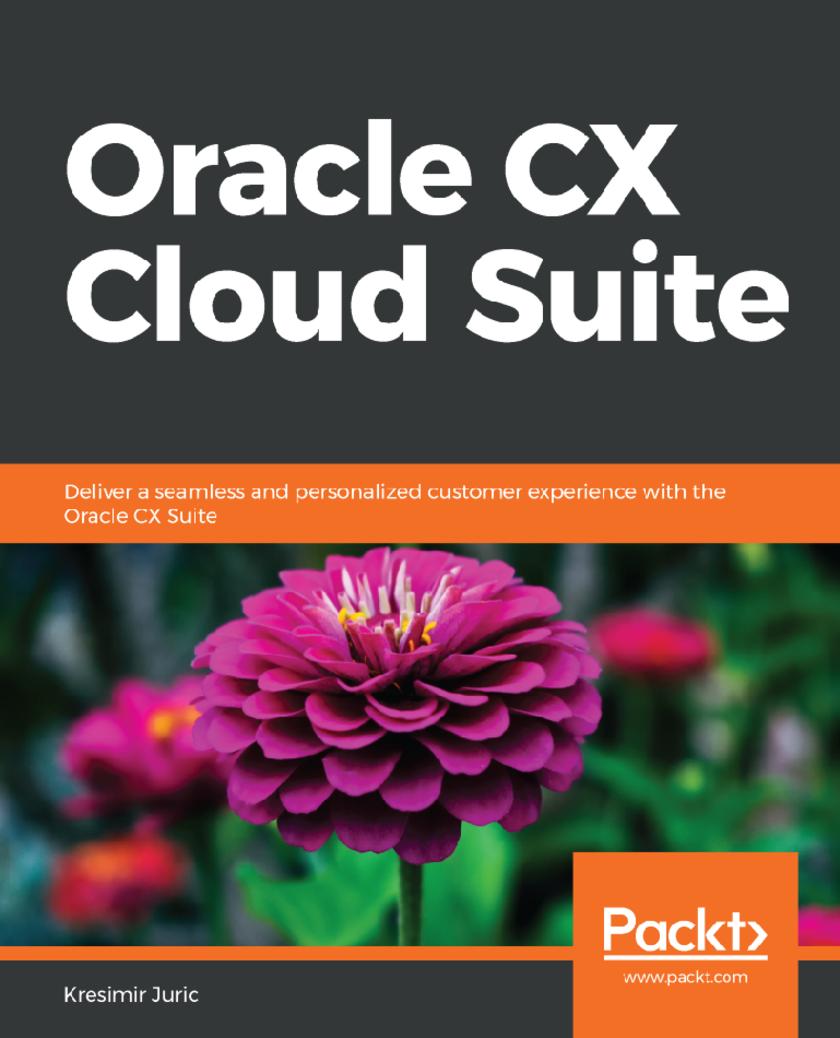
Oracle CX Cloud Suite
¥63.21
Gain a complete overview of Oracle CX Cloud Suite and its tools for functions ranging from marketing to sales and commerce to service Key Features * Make optimal use of your Oracle CX Cloud Suite to improve business results * Achieve improved customer insights through Oracle CX’s advanced capabilities * Learn how to design a CX solution architecture Book Description Oracle CX Cloud offers features and capabilities that help companies excel at sales, customer management, and much more. This book is a detailed guide to implementing cloud solutions and helping administrators of all levels thoroughly understand the platform. Oracle CX Cloud Suite begins with an introduction to high-level Oracle architecture and examines what CX offers over CRM. You’ll explore the different cloud-based tools for marketing, sales, and customer services, among others. The book then delves into deployment by covering basic settings, setting up users, and provisioning. You’ll see how to integrate the CX suite to work together to interact with the environment and connect with legacy systems, social connectors, and internet services. The book concludes with a use case demonstrating how the entire Oracle CX Suite is set up, and also covers how to leverage Oracle ICS and Oracle CX Cloud for hybrid deployment. By end of the book, you will have learned about the working of the Oracle CX Cloud Suite and how to orchestrate user experience across all products seamlessly. What you will learn * Differentiate between Oracle CRM and CX Cloud suites * Explore a variety of Oracle CX Cloud tools for marketing and sales * Set up users and database connections during deployment * Employ Cloud Suite CX tools to aid in planning and analysis * Implement hybrid Oracle CX solutions and connect with legacy systems * Integrate with social media connectors like Facebook and LinkedIn * Leverage Oracle ICS and Oracle CX Suite to improve business results Who this book is for This book is for administrators who want to develop and strengthen their Oracle CX Cloud Suite skills in the areas of configuration and system management. Whether you are a new administrator or an experienced professional, this book will enhance your understanding of the new Oracle CX features.
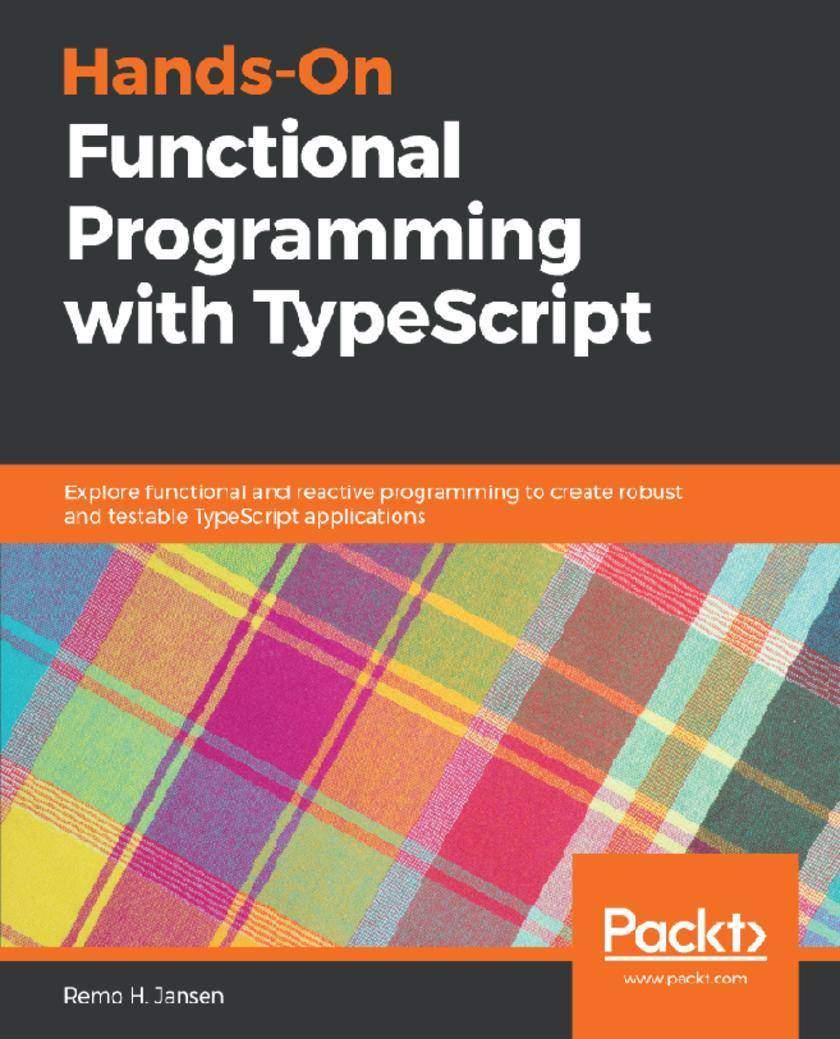
Hands-On Functional Programming with TypeScript
¥63.21
Discover the power of functional programming, lazy evaluation, monads, concurrency, and immutability to create succinct and expressive implementations Key Features * Get a solid understanding of how to apply functional programming concepts in TypeScript * Explore TypeScript runtime features such as event loop, closures, and Prototypes * Gain deeper knowledge on the pros and cons of TypeScript Book Description Functional programming is a powerful programming paradigm that can help you to write better code. However, learning functional programming can be complicated, and the existing literature is often too complex for beginners. This book is an approachable introduction to functional programming and reactive programming with TypeScript for readers without previous experience in functional programming with JavaScript, TypeScript , or any other programming language. The book will help you understand the pros, cons, and core principles of functional programming in TypeScript. It will explain higher order functions, referential transparency, functional composition, and monads with the help of effective code examples. Using TypeScript as a functional programming language, you’ll also be able to brush up on your knowledge of applying functional programming techniques, including currying, laziness, and immutability, to real-world scenarios. By the end of this book, you will be confident when it comes to using core functional and reactive programming techniques to help you build effective applications with TypeScript. What you will learn * Understand the pros and cons of functional programming * Delve into the principles, patterns, and best practices of functional and reactive programming * Use lazy evaluation to improve the performance of applications * Explore functional optics with Ramda * Gain insights into category theory functional data structures such as Functors and Monads * Use functions as values, so that they can be passed as arguments to other functions Who this book is for This book is designed for readers with no prior experience of functional programming with JavaScript, TypeScript or any other programming language. Some familiarity with TypeScript and web development is a must to grasp the concepts in the book easily.
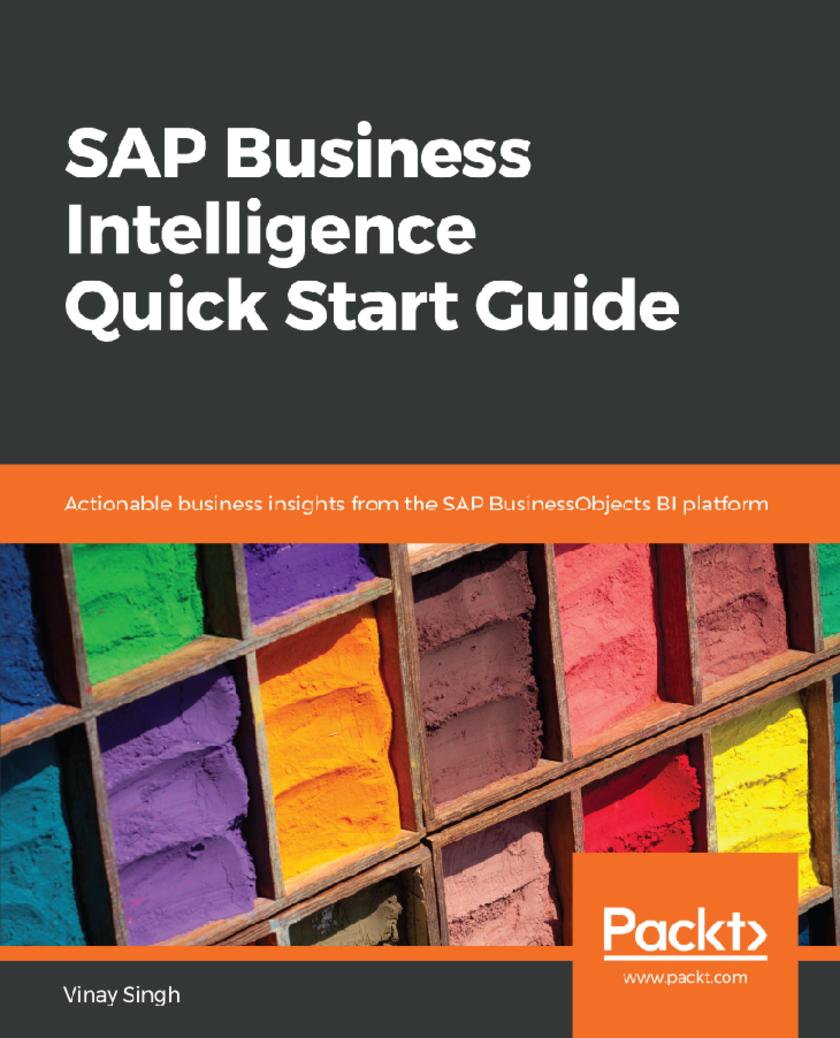
SAP Business Intelligence Quick Start Guide
¥63.21
Designing and deploying solutions using the SAP BusinessObjects Business Intelligence platform 4.2. Key Features * Get up and running with the SAP BusinessObjects Business Intelligence platform * Perform effective data analysis and visualization for actionable insights * Enhance your BI strategy by creating different types of reports and dashboards using SAP BusinessObjects Book Description The SAP BusinessObjects Business Intelligence platform is a powerful reporting and analysis tool. This book is the ideal introduction to the SAP BusinessObjects Business Intelligence platform, introducing you to its data visualization, visual analytics, reporting, and dashboarding capabilities. The book starts with an overview of the BI platform and various data sources for reporting. Then, we move on to looking at data visualization, analysis, reporting, and analytics using BusinessObjects Business Intelligence tools. You will learn about the features associated with reporting, scheduling, and distribution and learn how to deploy the platform. Toward the end, you will learn about the strategies and factors that should be considered during deployment. By the end, you will be confident working with the SAP BusinessObjects Business Intelligence platform to deliver better insights for more effective decision making. What you will learn * Work with various tools to create interactive data visualization and analysis * Query, report, and analyze with SAP Business Objects Web Intelligence * Create a report in SAP Crystal Reports for Enterprise * Visualize and manipulate data using an SAP Lumira Storyboard * Deep dive into the workings of the SAP predictive analytics tool * Deploy and configure SAP BO Intelligence platform 4.2 Who this book is for This book is for Business Intelligence professionals and existing SAP ecosystem users who want to perform effective Business Intelligence using SAP BusinessObjects.
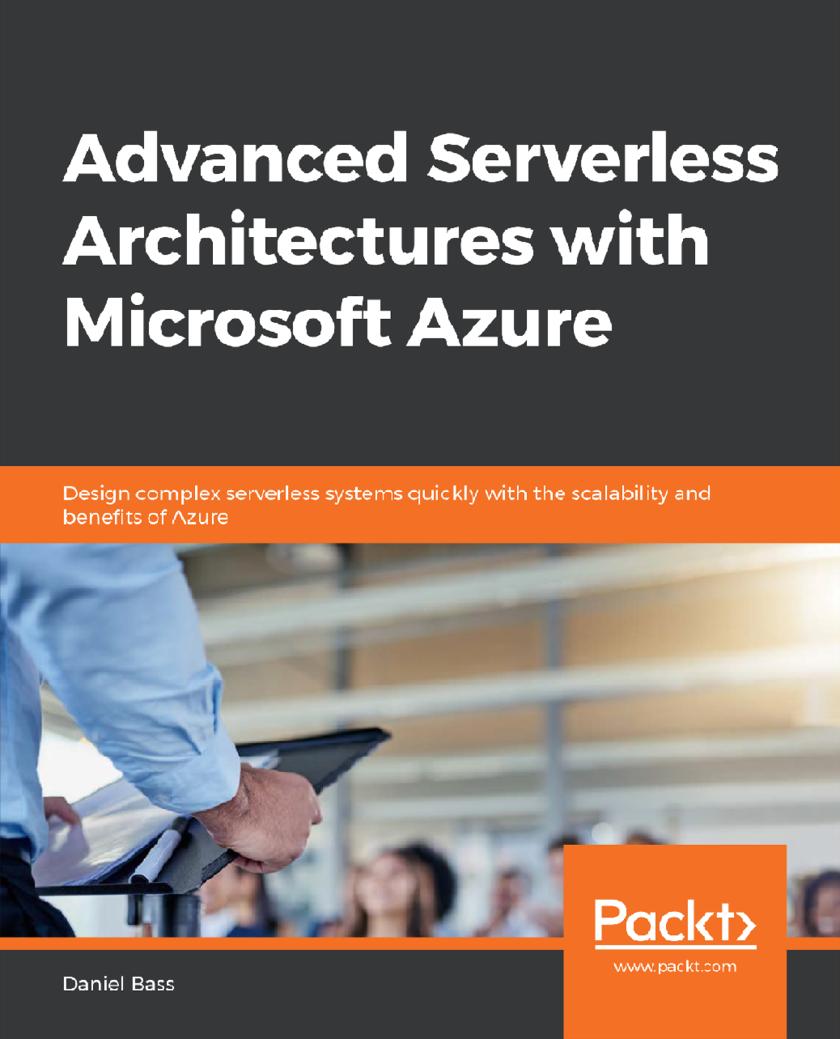
Advanced Serverless Architectures with Microsoft Azure
¥63.21
Build complex, observable, and fault-tolerant serverless systems easily on Microsoft Azure. Key Features * Use serverless systems to help you fulfill complex requirements * Develop your knowledge of Azure Microsoft Serverless * Understand concepts with a hands-on approach and helpful examples Book Description Advanced Serverless Architectures with Microsoft Azure redefines your experience of designing serverless systems. It shows you how to tackle challenges of varying levels, not just the straightforward ones. You'll be learning how to deliver features quickly by building systems, which retain the scalability and benefits of serverless. You'll begin your journey by learning how to build a simple, completely serverless application. Then, you'll build a highly scalable solution using a queue, load messages onto the queue, and read them asynchronously. To boost your knowledge further, the book also features durable functions and ways to use them to solve errors in a complex system. You'll then learn about security by building a security solution from serverless components. Next, you’ll gain an understanding of observability and ways to leverage application insights to bring you performance benefits. As you approach the concluding chapters, you’ll explore chaos engineering and the benefits of resilience, by actively switching off a few of the functions within a complex system, submitting a request, and observing the resulting behavior. By the end of this book, you will have developed the skills you need to build and maintain increasingly complex systems that match evolving platform requirements. What you will learn * Understand what true serverless architecture is * Study how to extend and scale architectures until they become ‘complex' * Implement durable functions in your design * Improve the observability of your serverless architecture * Implement security solutions using serverless services * Learn how to ‘practise' chaos engineering in production Who this book is for Advanced Serverless Architectures with Microsoft Azure is is ideal if you want to build serverless systems with fewer outages and high performance using Azure. Familiarity with the C# syntax and Azure Functions and ARM templates will help you to benefit more from this book. Prior knowledge of basic front-end development, HTML JS, and CSS is beneficial but not essential. Some DevOps knowledge is also beneficial but not essential.
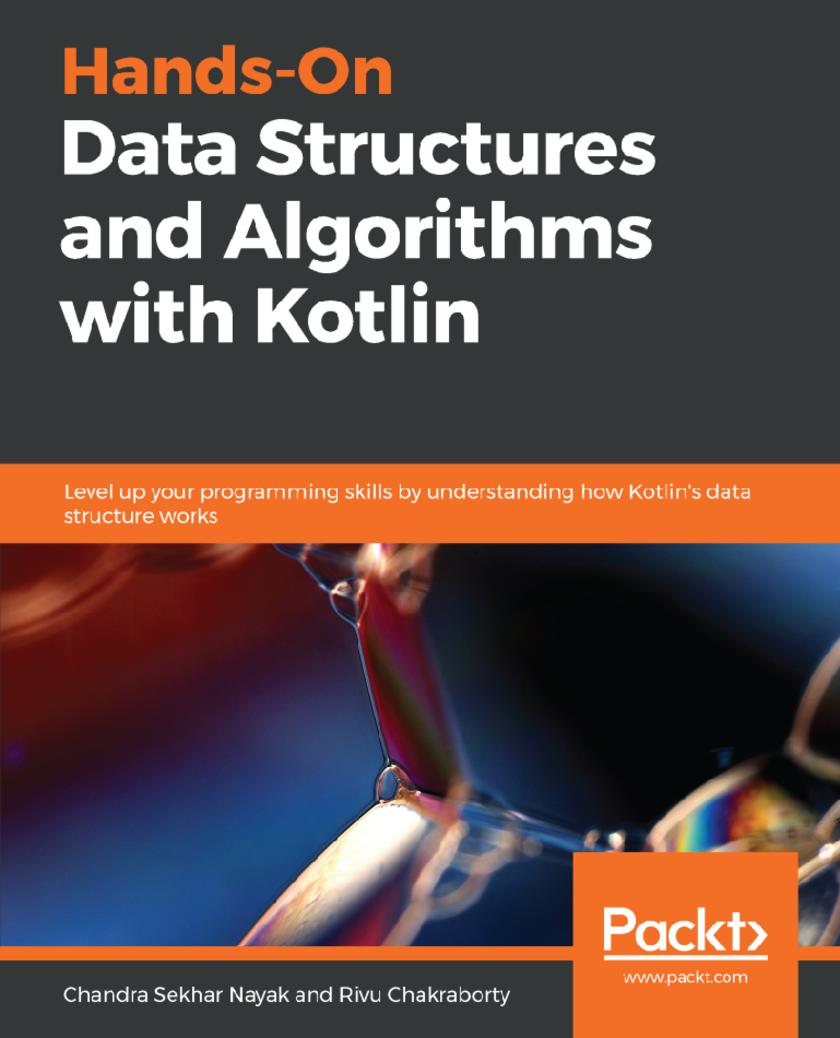
Hands-On Data Structures and Algorithms with Kotlin
¥63.21
Understand and solve complex computational problems and write efficient code with Kotlin Key Features * Learn about important data structures such as lists, arrays, queues, and stacks * Design custom algorithms for real-life implementations * Identify suitable tools for different scenarios and deliver immediate results Book Description Data structures and algorithms are more than just theoretical concepts. They help you become familiar with computational methods for solving problems and writing logical code. Equipped with this knowledge, you can write efficient programs that run faster and use less memory. Hands-On Data Structures and Algorithms with Kotlin book starts with the basics of algorithms and data structures, helping you get to grips with the fundamentals and measure complexity. You'll then move on to exploring the basics of functional programming while getting used to thinking recursively. Packed with plenty of examples along the way, this book will help you grasp each concept easily. In addition to this, you'll get a clear understanding of how the data structures in Kotlin's collection framework work internally. By the end of this book, you will be able to apply the theory of data structures and algorithms to work out real-world problems. What you will learn * Understand the basic principles of algorithms and data structures * Explore general-purpose data structures with arrays and linked lists * Get to grips with the basics of stacks, queues, and double-ended queues * Understand functional programming and related data structures * Use performant searching and efficient sorting * Uncover how Kotlin's collection framework functions * Become adept at implementing different types of maps Who this book is for If you're a Kotlin developer who wants to learn the intricacies of implementing data structures and algorithms for scalable application development, this book is for you.
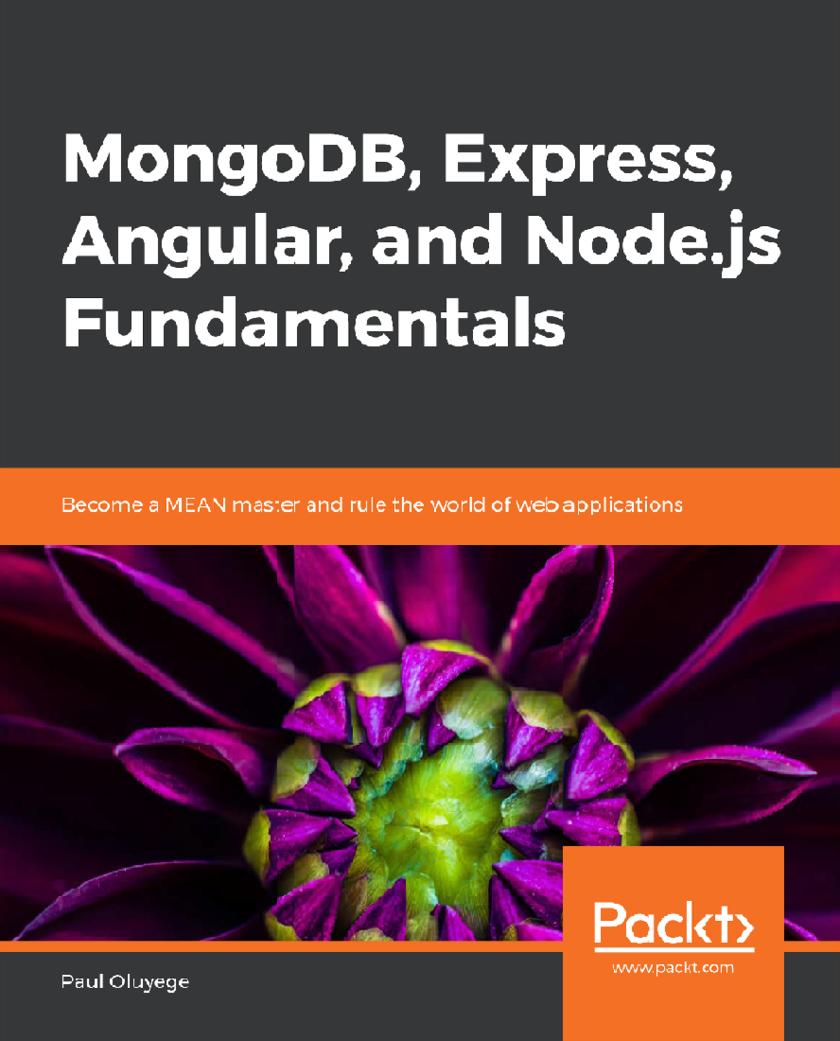
MongoDB, Express, Angular, and Node.js Fundamentals
¥63.21
Build fast, robust, and maintainable modern full-stack web applications using MongoDB, Express, Angular, and Node.js. Key Features * Build highly scalable, asynchronous, and event-driven APIs * Develop a user authentication system with MEAN * Build a full-fledged application using the MEAN stack Book Description MongoDB, Express, Angular and Node.js Fundamentals is a practical guide to the tried-and-true production-ready MEAN stack, with tips and best practices. The book begins by demystifying the MEAN architecture. You’ll take a look at the features of the JavaScript libraries, technologies, and frameworks that make up a MEAN stack. With this book, you'll not only learn how to develop highly scalable, asynchronous, and event-driven APIs quickly with Express and Node.js, but you'll also be able put your full-stack skills to use by building two full-fledged MEAN applications from scratch. You’ll understand how to build a blogging application using the MEAN stack and get to grips with user authentication using MEAN. As you progress through the chapters, you’ll explore some old and new features of Angular, such as pipes, reactive forms, modules and optimizing apps, animations and unit testing, and much more. By the end of the book, you’ll get ready to take control of the MEAN stack and transform into a full-stack JavaScript developer, developing efficient web applications using Javascript technologies. What you will learn * Understand the MEAN architecture * Create RESTful APIs to complete CRUD tasks * Build a blogging application with basic features * Describe best practices to secure node applications * Implement authentication and authorization * Creating simple animations using Angular * Perform unit testing on Angular applications Who this book is for If you are a beginner or intermediate frontend developer who wants to become full-stack JavaScript developer, this book is ideal for you. You'll need some prior exposure to MongoDB as we skim over its basics before getting straight to work.




 购物车
购物车 个人中心
个人中心



